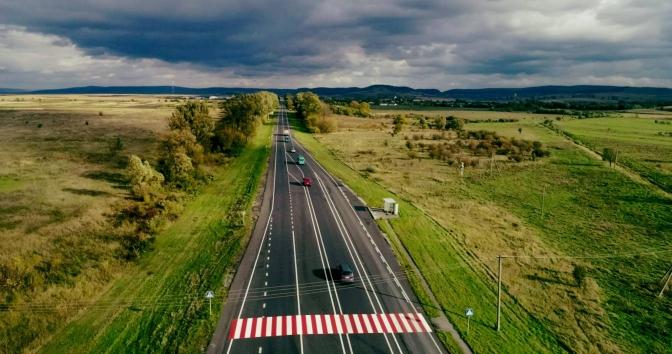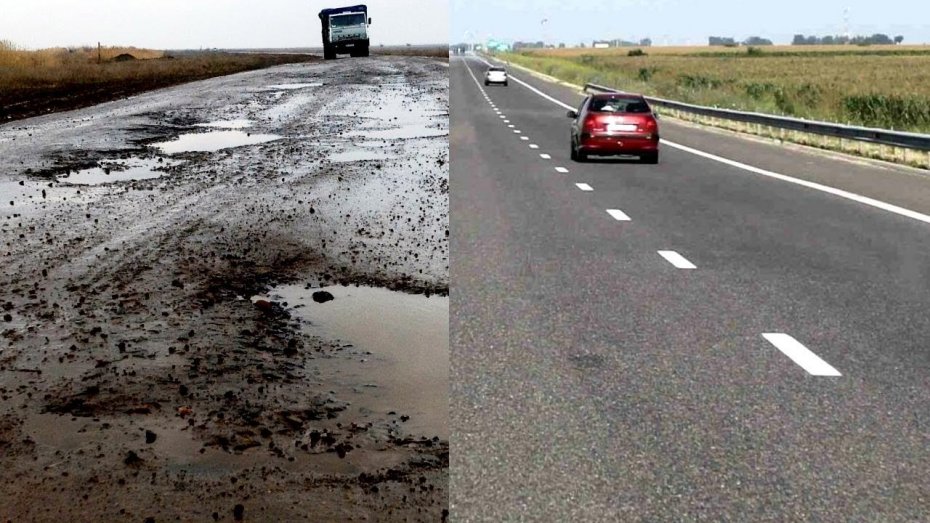More than 1,300,000 people die in fatal traffic accidents around the world each year, with 35,000 in the US alone. In Ukraine, about 5,000 people die on average in traffic accidents per year. Thus, in 30 years of Ukrainian independence, almost the entire population of the city of Ternopil -- a regional center in Western Ukraine -- has died in traffic accidents. Yet Ukraine’s road fatality rate has declined by 30% -- all of it in recent years.
While alcohol is the leading cause of traffic accidents in the world, in Ukraine the poor design of roads should not be underestimated. When in 2019 Reece Lynch, a bold UK filmmaker, drove his grandmother’s Ford Fiesta 3,700 km right across Europe to the Ukrainian Donbas to film the ongoing war for his project First Focus, it took him three days to drive halfway — from the UK to the Ukrainian border — and then five days for the other half — from the Ukrainian border to the Donbas.
Why is there such a difference? Because Ukraine has few highways. Although the overall network of thoroughfares is well-developed, it mainly consists of only two-lane roads. Lynch probably obeyed the speed limits of 60 and 80 km of villages -- however, it is not usual for many Ukrainian drivers who save time by driving at least 100 km — even through villages. They would probably say there is no alternative, and a potential speeding fine of UAH 510 ($19) is not much of a disincentive. Here is what to expect on Ukrainian roads and how the situation eventually is improving.
According to the Global Burden of Disease Collaborative Network, in 2017, Ukraine was between Peru and Colombia with its 14.01 traffic-related deaths and injuries per 100,000 inhabitants, which is way over the West European average of 4.85. In comparison, the US has 12.16 deaths and injuries per 100,000, while the Central African Republic — the leader in traffic deaths and injuries — had 85.50 per 100,000.
Overall, some 7,000 km of the most-traveled roads were completely reconstructed by Groysman’s initiative. Zelenskyy’s team has announced another 24,000 km to be renewed in the next five years — a figure that translates into a total reconstruction of all state roads. Work is currently underway to meet this goal despite the disruptions of the coronavirus crisis.


Therefore, it is not the poor condition of roads but their design that is now the main cause of traffic fatalities. Ukraine has no highways with a maximum speed of 110 km or over. As a result, drivers often treat secondary roads that pass through villages but connect the main cities as highways, violating speed limits to cut travel time, and thus adding to the number of accidents.
Speed limits that will not work without proper roads and alternative highways
[On 1 June, the first traffic cameras monitoring speed limits were installed around Kyiv. On the first day, a camera captured a record violation by a car -- 208 km per/hour on a road where the speed limit is 80. In the first five days, 45 cameras captured some 200,000 violations. Offending drivers receive a letter advising them of their fine and requiring payment or court appearance. Clearly, it will be difficult to administer the large number of fines generated by traffic cameras. Nonetheless, police have set a goal of 683 cameras in the country by the end of the year. This is the necessary reform that many citizens have been waiting for. Cameras are the only effective tool to impede gross violations of traffic rules and for all drivers to abide by the same rules -- regardless of their income or status. However, as Pavlo Syrvatka, division head at the state-owned, road construction company Ukravtodor explained, neither cameras nor road regulations will contribute sufficiently to minimize the risk of traffic accidents and control speed limits -- the design of roads is at the heart of the matter. Roads with speed limits of 20, 40, or 60 km/hour should look like roads with such limits. Roads with limits of 110 or over should look like actual highways with multi-lanes. In Ukraine, however, multi-lane motorways are rare, and even those often pass through villages. Conversely, some motorways between cities — which should be designed as highways — look like ordinary two-lane rural roads. If stuck behind a slow vehicle, drivers will often switch to the lane in the opposite direction, driving dangerously fast and sometimes in the face of an oncoming vehicle. These defects in road design exacerbate an already bad situation.
The road reform and extensive motorway network under construction
The government’s previous reconstruction, although very important, only allowed for the renovation of existing roads.As of 2020, road widenings from two to four lanes are being planned. This will allow for adjustments in current speed limits to better suit the routes and make highways safer. As well, the construction of the first toll road in Ukraine, by a private investor, is planned to get off the ground in 2020.

- Ukraine’s transport potential: key facts you should know
- 10 successes of Ukraine in 2019 you don’t know about but should
- On the verge of disaster: top 5 environmental problems in Ukraine
- Ukraine’s economic losses due to Russian occupation of Donbas
- $ 5,000 still to go!How can Kyiv become the center of Europe? Find answers at the Kyiv Investment Forum 2019

